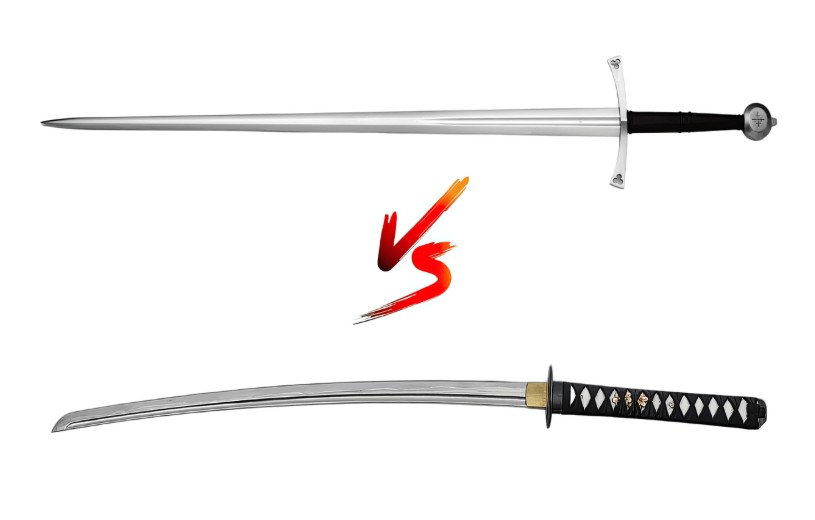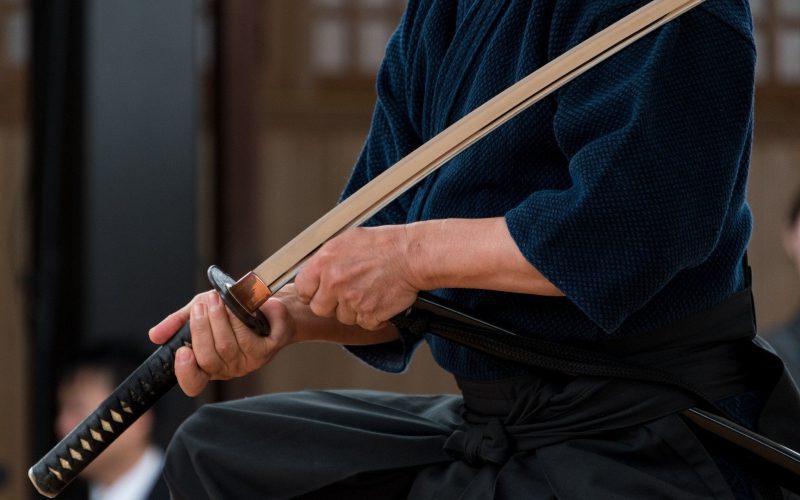No other sword has impressed the world with its strength and unique design than the katana. The sword’s unique curvature and sharpness come from skillful forging and differential hardening.
So, what makes this powerful weapon so strong? This article explores the secrets behind the katana’s formidable strength.

Katana History and Cultural Significance
The katana is deeply tied to Japanese tradition and culture and represents discipline, honor, and strength. The weapon was widely used during the Edo period in ancient Japan. But it wasn’t just an instrument of war.
As Japan changed, so did its weapons. Swordsmiths advanced their techniques to make katanas that weren’t just battle-ready. The cultural value placed on the katana influenced the development of advanced techniques that would maximize its strength, beauty, and symbolic power. The devotion to perfection in these blades has helped cement the katana as a powerful weapon and a symbol of the Japanese spirit.
What Makes a Katana Strong?
Katana’s strength comes from several factors, including:
Steel Quality and Composition
Swordsmiths craft katanas from tamahagane steel, which contains high carbon content. This unique material makes the blade strong and resilient. Unlike many Western swords made from a single type of steel, tamahagane combines high- and low-carbon steel, which balances hardness and flexibility. This dual composition ensures the blade can easily withstand impact without shattering or dulling.
Swordsmithing Techniques
The folding process is a critical element that sets the katana apart. Swordsmiths heat and fold the steel multiple times, creating layers of refined metal. This method removes impurities and makes the blade strong and uniform. Unlike mass-produced swords, it requires detailed craftsmanship to achieve remarkable durability and beauty.
Differential Hardening Process
Katana’s most notable characteristic is the yaki-ire. It’s a heat-treatment procedure that gives the blade a distinctive curved shape. The process involves controlling the cooling rate on the blade’s surface by adding clay to particular parts of the blade. The result is a complex sharp edge, leaving the spine flexible. This process makes the weapon resistant to stress and capable of absorbing shock without breaking. In contrast, other swords have a uniform hardness, making them more susceptible to snapping or chipping under pressure.
Design and Functional Characteristics Unique to the Katana
The katana has different features that distinguish it from other swords. Here are it’s unique attributes that make it strong:
Blade Shape and Sharpness
Katanas are celebrated for their distinctive, sharp, and curved blade. This curvature allows for powerful cuts requiring less force than straight-edged swords. The design is perfected for slicing, and each katana is skillfully sharpened. This ensures the edge easily cuts through dense materials. The geometry maximizes its cutting force, making the sword highly effective for quick, clean strikes.
Weight and Balance
Despite its length, a Real japanese katana is relatively lightweight, unlike Western swords like broadswords. With the balance point close to the handle, the katana’s weight distribution allows for swift movements and precision. This design prioritizes speed and agility, enabling the wielder to deliver fast, efficient strikes. For a samurai, this meant they could strike quickly in battle, often with deadly accuracy.
Cutting and Shearing Capability
Katanas feature a slightly convex edge, a design that enhances their shearing power. When combined with the differential hardening and layered steel construction, the blade can maintain its sharpness through repeated use. This quality makes katanas particularly strong in cutting and slicing, distinct from the thrusting and slashing techniques standard to other swords.
Comparison with Other Swords
Although many swords look similar in appearance, there are some noticeable differences, including:
Katana vs. Western Swords
Western swords often have straight, double-edged blades. These weapons were built primarily for slashing and thrusting. The swords typically focus on durability and brute strength. On the contrary, the katana balances hardness and flexibility. While effective in their own right, Western swords lack the specialized artistry that gives the katana its distinctive sharpness and resilience.
Katana vs. Other Eastern Swords
Eastern swords, including the Chinese dao, slightly resemble the katana. They have a single-edged structure and prioritize cutting power. However, katanas’ unique folding and hardening methods make them stand out. They create a unique blend of flexibility and hardness.
While the dao focuses on versatility, the katana excels in clean, powerful slices, making it one of the most effective cutting weapons.
Strength in Purpose and Technique
Although katanas specialize in cutting and slicing, other swords are created for diverse combat styles and environments. The katana’s strength lies in its craftsmanship, making it ideal for close combat where precision, speed, and clean cuts are required.
Limitations and Myths of Katana Strength
Although katanas have a formidable reputation, they may have their weaknesses. Here’s a closer look at a few myths about the katana.
Common Misconceptions
Popular culture depicts katanas as unbreakable, capable of tearing through anything. However, this is a myth. Like all swords, katanas have limitations. They are not immune to damage and can chip or break if misused or against materials they weren’t designed to cut.
Situational Strength
The katana was optimized for unarmored or lightly armored opponents. It might struggle against heavy armor or shields compared to a thicker, more blunt weapon designed for piercing or blunt force. Each sword’s strength is tied to its intended use, and while katanas excel at slicing, they are not universal weapons.
Modern Perception and Influence of the Katana
Digital media has significantly changed the popularity and perception of katanas in recent years. Here’s how:
Popularity in Pop Culture
Video games, movies, and anime have contributed to the popularity of katana. This exposure has shaped how people view the katana, often emphasizing its strength and beauty. Today, the katana is as much a symbol of artistry and history as it is a weapon.
Revived Swordsmithing Techniques
Modern swordsmiths continue the tradition of crafting katanas using ancient techniques. Often they, combine them with new methods to create even stronger blades. This resurgence of interest has allowed the katana to remain relevant and revered in both martial arts and weapon craftsmanship circles.
Comparative Use in Martial Arts
Katanas are key to Japan’s martial arts. Practitioners train with replicas to learn the art of swift cutting and disciplined maneuvering. This training focuses on the skill and strength required to wield the katana effectively, showing its unique balance of power and elegance.
Conclusion
The katana’s strength stems from centuries of refinement, cultural significance, and unmatched craftsmanship. Its unique construction, differential hardening, and design make it one of the most iconic weapons in history, capable of remarkable power and precision. While not without limitations, the katana remains a testament to the commitment and craft of Japanese swordsmiths and a symbol of beauty and strength that resonates even today.
